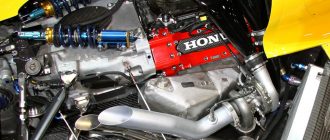What is a Base Engine in a Car?
Definition of a Base Engine
A base engine is the most basic engine configuration available for a particular vehicle model. It typically consists of the bare minimum components necessary for the engine to function, such as the block, head, pistons, crankshaft, and camshaft. Base engines are often found in entry-level or economy cars, as they offer the lowest possible cost and fuel consumption.
Features of a Base Engine
Base engines typically have the following characteristics:
- Lower horsepower and torque: Base engines produce less power and torque than higher-performance engines, which makes them less powerful and responsive.
- Fewer cylinders: Base engines typically have fewer cylinders than higher-performance engines, which means they have a smaller displacement and less power potential.
- Less sophisticated valvetrain: Base engines often have a simpler valvetrain, with fewer valves and less camshaft profiles, which limits their performance potential.
- Lower compression ratio: Base engines often have a lower compression ratio than higher-performance engines, which reduces their power potential and fuel efficiency.
- Simpler fuel injection system: Base engines often have a simpler fuel injection system, with fewer injectors and less precise fuel control, which can affect their fuel efficiency and performance.
Advantages of a Base Engine
Base engines offer several advantages, including:
- Lower cost: Base engines are typically the least expensive engine configuration available, which can save you money on the purchase price of your vehicle.
- Better fuel economy: Base engines typically have better fuel economy than higher-performance engines, which can save you money on fuel costs over the life of your vehicle.
- Lower maintenance costs: Base engines have fewer complex components than higher-performance engines, which can reduce maintenance costs over the life of your vehicle.
Disadvantages of a Base Engine
Base engines also have some disadvantages, including:
- Less power and torque: Base engines produce less power and torque than higher-performance engines, which makes them less powerful and responsive.
- Less sophisticated valvetrain: Base engines often have a simpler valvetrain, with fewer valves and less camshaft profiles, which limits their performance potential.
- Lower compression ratio: Base engines often have a lower compression ratio than higher-performance engines, which reduces their power potential and fuel efficiency.
- Simpler fuel injection system: Base engines often have a simpler fuel injection system, with fewer injectors and less precise fuel control, which can affect their fuel efficiency and performance.
Conclusion
The base engine is the most basic engine configuration available for a particular vehicle model. It typically consists of the bare minimum components necessary for the engine to function, such as the block, head, pistons, crankshaft, and camshaft. Base engines are often found in entry-level or economy cars, as they offer the lowest possible cost and fuel consumption.
When choosing an engine for your vehicle, it is important to consider your needs and budget. If you are looking for a fuel-efficient and affordable engine, a base engine may be a good option. However, if you are looking for more power and performance, you may want to consider a higher-performance engine.




